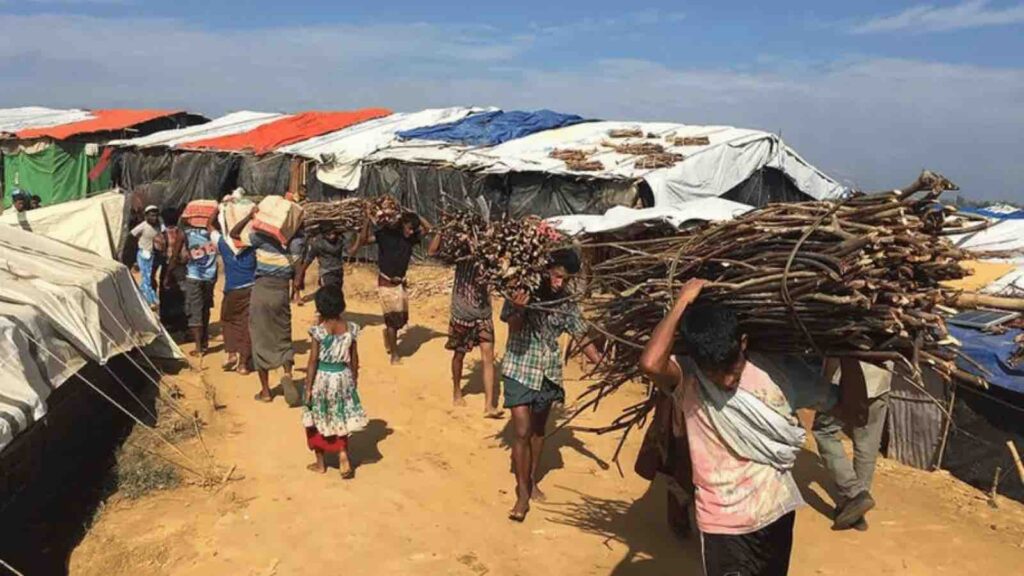Enveloped in a tropical monsoon climate zone, Cox Bazar, in Bangladesh, grapples with excessive rainfall, posing significant risks to the camp’s makeshift shelters and the health of its inhabitants due to stagnant water and climate crisis.
As the world grapples with the challenges posed by climate change, its pernicious effects are acutely felt in the precarious dwellings of refugee camps worldwide. The United Nations refugee agency estimates that global displacement has alarmingly surged to 103 million people by mid-2022, up from 90 million at the close of 2021. Many of these displaced individuals find themselves housed in long-term informal settlements or refugee camps, typically located in isolated regions with severe climatic conditions.
RELEVANT SUSTAINABLE GOALS



Refugee Camp Environmental Crisis
The groundbreaking research unveils an alarming reality: these makeshift abodes, home to the world’s most vulnerable, are becoming hotbeds of extreme weather conditions, exacerbated by the relentless progression of climate change. We dissected the data surrounding the world’s 20 largest refugee settlements, juxtaposing climate, weather, and population data against the conditions in refugee-hosting countries. The conclusions are sobering.
Findings underscore a bleak truth: compared to the average weather conditions in host countries, the environments encasing refugee camps are often considerably harsher. This harsh reality compounds the already pervasive social and political exclusion faced by these disenfranchised populations.
The evidence points to a worrying trend for both slow and rapid-onset weather events, spanning from long-term shifts in temperature and precipitation to sudden disasters such as flooding, heatwaves, and coldwaves.
Take the refugee settlements in Kenya and Ethiopia, ensconced in arid desert or tropical savanna climate zones. Average temperatures in these areas surpass national averages by a staggering 7.65℃ and 8.75℃, respectively. Unsurprisingly, these scorching regions also tend to experience lower than average rainfall.
Conversely, refugees in Jordan and Pakistan grapple with biting cold temperatures and harsh winter conditions. In Pakistan’s Balochistan province, the thermometer plunges to averages of 4.12℃ lower than the national norm. Similarly, the Zaatari refugee camp in Jordan, sitting on the cusp of the Syrian border, is engulfed by a cold arid steppe zone, bringing with it scorching summers and brutal winter conditions.
Amid this stark portrait, there’s a sliver of surprising news. Our analysis found fewer significant findings for rapid-onset events such as heatwaves, coldwaves, and extreme rainfall. However, it doesn’t translate into refugee settlements being shielded from these events. In fact, regions hosting the majority of refugees worldwide are most susceptible to climate change, thus exposing these settlements to severe risks.
A case in point is Cox’s Bazar in Bangladesh, home to roughly 1 million Rohingya refugees. Enveloped in a tropical monsoon climate zone, this region grapples with excessive rainfall, posing significant risks to the camp’s makeshift shelters and the health of its inhabitants due to stagnant water.
A The findings indicate a troubling future. Over time, the severity of extreme temperature periods in refugee settlement areas in countries like Kenya, Ethiopia, Bangladesh, Rwanda, Sudan, South Sudan, and Uganda has risen. The longevity of cold spells has also seen a slight increase in Pakistan, Jordan, and Ethiopia, posing significant health hazards to refugees in the absence of adequate shelter and protection.
In conclusion, the deep-seated effects of climate change are intensifying the plight of refugees, impairing their ability to develop resilience and self-reliance. As the frequency of extreme weather events escalates, the pressure on host communities and strained relationships over scarce resources also mounts. It’s imperative that national climate adaptation and sustainable development policies prioritize support and protection for displaced populations and host communities. Without such strategies, mitigating the effects of climate change on these vulnerable populations will become increasingly arduous.
Rohingya refugee crisis – Bangladesh: Returning home after collecting wood. Lead image courtesy of FAO.
You may also be interested in :
10 Inspiring Social Justice And Activism To Follow On Instagram


